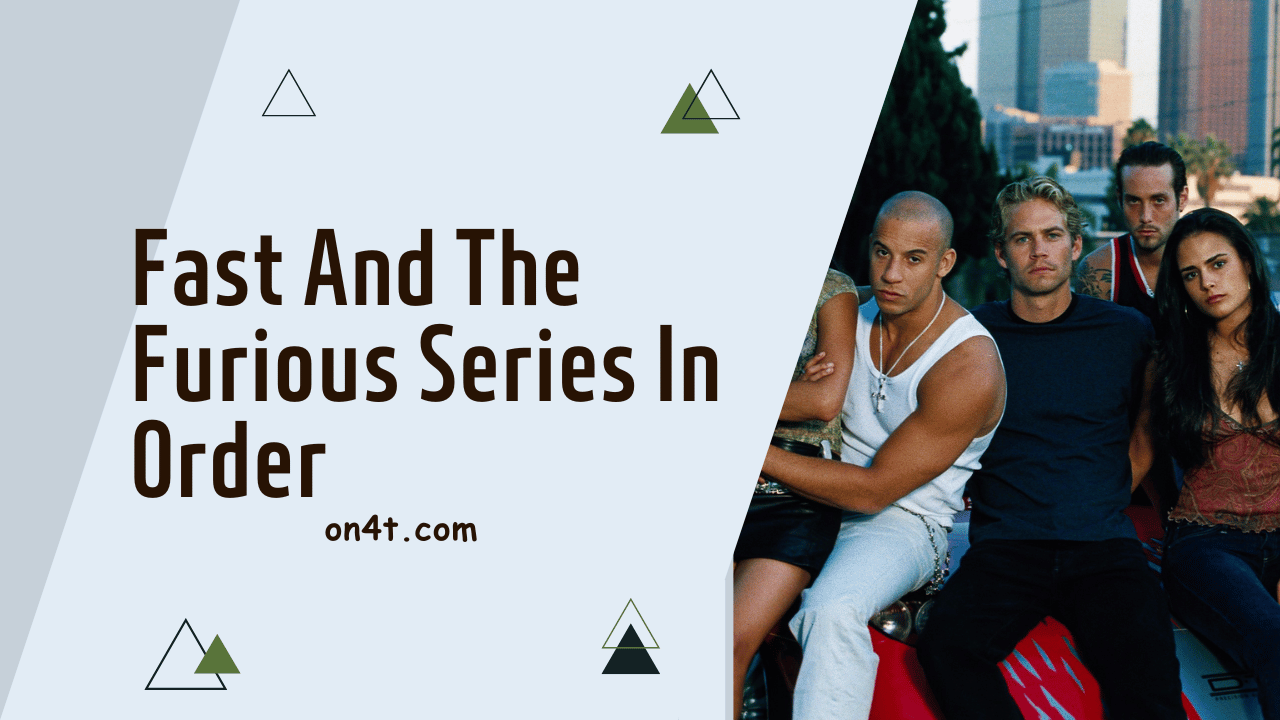The “Fast and the Furious” series is a beloved franchise known for its high-octane action, thrilling car chases, and diverse cast of characters. Spanning over two decades, the series has captivated audiences worldwide with its adrenaline-pumping races and compelling storylines.
In this article, we will discuss the chronological order of the “Fast and the Furious” series, providing fans with a clear guide on how to experience the adventures of Dom Toretto and his crew in the most cohesive and immersive way possible.
Understanding Fast And The Furious Series
The “Fast and the Furious” series is a high-octane franchise that blends fast cars, heists, and action-packed sequences with themes of family, loyalty, and redemption. It started off in 2001 and has grown into one of the most successful film series in the action genre. Here’s a breakdown to help you get a grip on the series:
- The Beginning (2001 – “The Fast and the Furious”): It all started with street racing in Los Angeles, where we meet Brian O’Conner (Paul Walker), an undercover cop, and Dominic Toretto (Vin Diesel), a respected figure in the street racing scene suspected of hijacking trucks. The movie sets the tone for the series with its focus on cars, action, and the budding relationship between Brian and Dom.
- Expanding the World (2003 – “2 Fast 2 Furious”): The second film sees Brian as a fugitive in Miami, diving deeper into the world of street racing and marking the introduction of Roman Pearce (Tyrese Gibson) and Tej Parker (Ludacris), who become key figures in the series.
- A Shift in Gear (2006 – “The Fast and the Furious: Tokyo Drift”): This installment takes a detour to Tokyo, focusing on the new character Sean Boswell (Lucas Black) and introducing drifting. It’s somewhat standalone but ties back into the larger narrative in later films, especially with the character Han Lue (Sung Kang).
- Getting the Gang Back Together (2009 – “Fast & Furious”): The fourth film marks a return to the original cast and sets the stage for the series’ evolution from street racing to high-stakes heists, with a revenge plot against a drug lord.
- Turning Up the Heat (2011 – “Fast Five”): Often seen as a turning point for the franchise, “Fast Five” transitions fully into heist and action territory, bringing together characters from previous films for a massive job in Rio de Janeiro. It also introduces DSS Agent Luke Hobbs (Dwayne Johnson), who starts as an antagonist but becomes part of the “family.”
- Global Stakes (2013 – “Fast & Furious 6”): The team is brought together again to take down a mercenary group, with the promise of full pardons. This film ups the ante with its action sequences and continues to build on the franchise’s lore.
- Loss and Legacy (2015 – “Furious 7”): Marked by the real-life death of Paul Walker, this film focuses on the team battling a new villain, Deckard Shaw (Jason Statham), seeking revenge for his brother’s downfall in the previous film. It’s emotional, with a tribute to Walker that resonates with fans.
- Family Ties (2017 – “The Fate of the Furious”): Dom is coerced into betraying his family by a cyberterrorist, Cipher (Charlize Theron), introducing cyber warfare into the franchise’s themes and testing the bonds of the “family.”
- Spin-offs and Expansions (2019 – “Hobbs & Shaw”): This spin-off focuses on Luke Hobbs and Deckard Shaw, expanding the universe beyond the main series and exploring new dynamics and threats.
Throughout its evolution, the “Fast and the Furious” series has remained centered on themes of family, loyalty, and the thrill of the chase, all while delivering increasingly spectacular action sequences and stunts. It’s a testament to the franchise’s ability to reinvent itself while staying true to its core values.
Complete Fast And The Furious Series In Order
- The Fast and the Furious (2001)
- 2 Fast 2 Furious (2003)
- The Fast and the Furious: Tokyo Drift (2006)
- Fast & Furious (2009)
- Fast Five (2011)
- Fast & Furious 6 (2013)
- Furious 7 (2015)
- The Fate of the Furious (2017)
- Fast & Furious Presents: Hobbs & Shaw (2019)
- F9 (2021)
- Fast and Furious 10 (2023)
FAQs
What is the chronological order of the Fast and the Furious series?
The Fast and the Furious series should be watched in the following order: 1. The Fast and the Furious (2001) 2. 2 Fast 2 Furious (2003) 3. The Fast and the Furious: Tokyo Drift (2006) 4. Fast & Furious (2009) 5. Fast Five (2011) 6. Fast & Furious 6 (2013) 7. Furious 7 (2015) 8. The Fate of the Furious (2017) 9. F9: The Fast Saga (2021)

Are there any spin-offs or additional content related to the Fast and the Furious series?
Yes, there is a spin-off movie titled “Fast & Furious Presents: Hobbs & Shaw” (2019), featuring characters Luke Hobbs and Deckard Shaw. It’s a standalone film but shares connections with the main series.
What is the genre and main theme of the Fast and the Furious series?
The Fast and the Furious series primarily falls under the action genre, focusing on themes of family, loyalty, adrenaline-fueled car racing, and high-stakes heists. It blends elements of crime, drama, and occasionally, espionage.
Conclusion
The Fast and the Furious series, spanning over two decades, has grown from a street racing saga to a global blockbuster franchise. With its mix of high-speed chases, family themes, and heist action, it captures audiences worldwide. Each film builds on the last, adding depth to its characters and expanding its universe.
Talking about tools like On4t Online TTS, they make life easier by turning text into speech. It’s great for multitasking or for those who prefer listening over reading. Simple to use, it helps in learning or enjoying content hands-free.